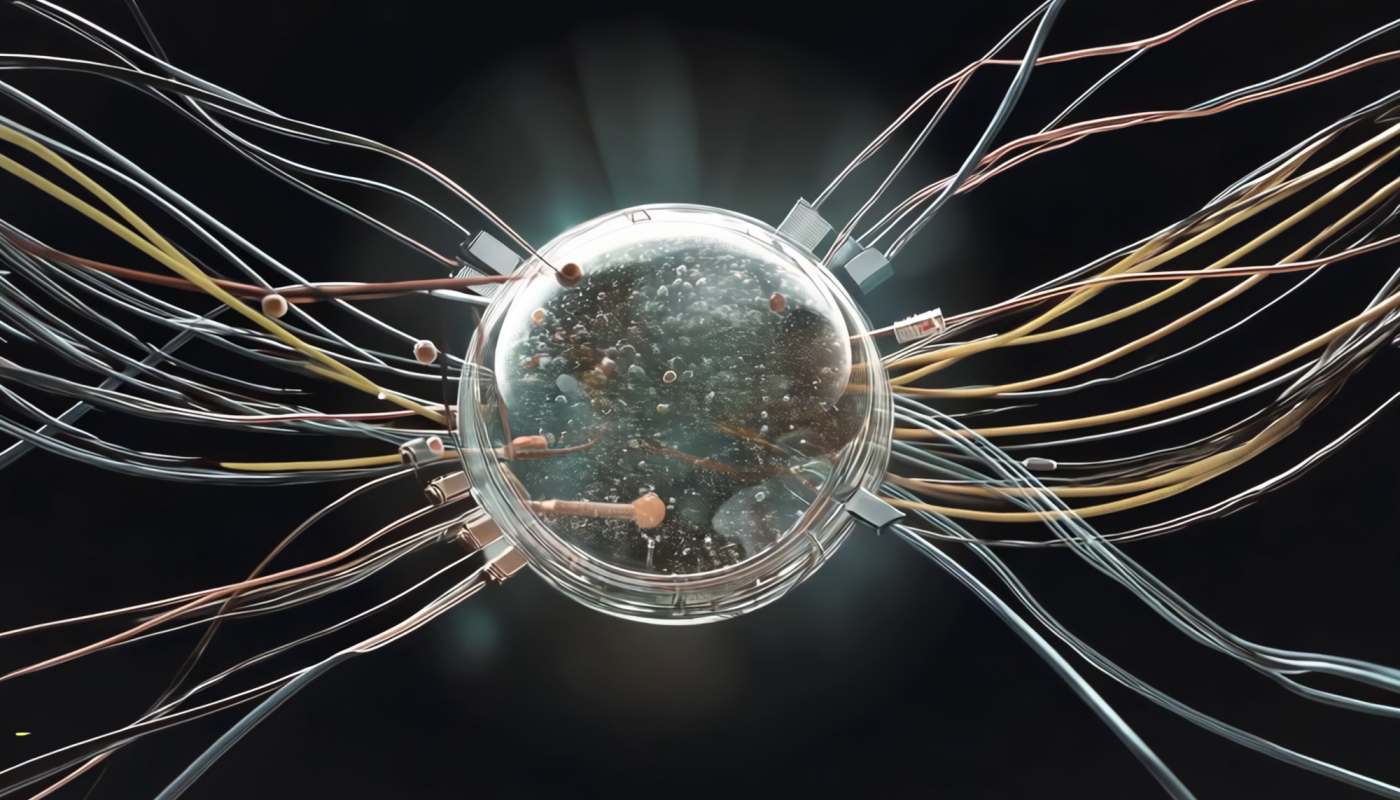Recent advancements show that liquid memories and liquid computing devices bring a transformative approach to robotics and computer science
Developing artificial intelligence (AI) leverages computing systems whose desired features include adaptability, robustness, and resource efficiency. Central to these developments is achieving intrinsic plasticity – an innate self-adaptation to diverse tasks and environmental conditions that enables learning – while maintaining fault tolerance, essential for continuous operation under unpredictable or extreme conditions.
Further complicating the design landscape is the need for energy efficiency and a minimised reliance on scarce raw materials, aligning with sustainability goals.
Plus, the harmful nature of chemicals and their toxicity towards humans and the environment must be kept under control when considering industrial-scale processes. Traditional solid-state computing substrates face limitations in achieving this combination of features, especially in environments where robustness and resilience to electrical, thermal, mechanical, or chemical stresses are critical.
Liquid computing and colloidal systems hold promise
In contrast, liquid and colloidal systems hold promise as alternative substrates due to their dynamic, reconfigurable nature. Their inherent fluidity enables adaptable connectivity and supports neuromorphic computation mimicking natural information processing in biological systems. Colloids, nanoparticles stabilised in a liquid medium, feature tunable particle interactions and can introduce structured, fault-tolerant networks that potentially self-heal, adapt to damage, and operate under a range of environmental stresses.
We know that harnessing the potential of these soft, intrinsically amorphous matter substrates, requires overcoming several challenges, including optimising control over their states and interactions, stabilising their properties across diverse conditions, and defining new algebra, control tools and interaction setups. After three years of research, the project COgITOR, funded by the European Innovation Council and SMEs Executive Agency (EISMEA), reached unprecedented results, bringing a novel approach to cybernetics and proposing the study of Colloidal Cybernetic Systems (CCS).
A CCS is a multifunctional liquid-based platform designed to be capable of sensing, energy harvesting, computing and data storage. (1) A promising application of CCS is found in reservoir computing (RC), a machine learning (ML) paradigm developed to manage temporal and sequential data. RC employs highly nonlinear substrates, such as spintronic oscillators, photonic circuits, and liquids, which enable high-dimensional mappings crucial for complex, real-time tasks like voice and image recognition.
Among these substrates, CCS – particularly colloidal suspensions based on zinc oxide, carbon nitride, or magnetite nanoparticles – showcase dynamic information processing through electrohydrodynamic and magnetohydrodynamic interactions. These properties introduce fault-tolerance and adaptability and are capable of synaptic plasticity, learning, and pattern recognition, suggesting a future where liquid-based neuromorphic processors are available. (2)
Liquids have shown a high tolerance to electrostatic discharge and ionising radiation, robustness against liquid volume changes, and resistance to stochastic switching, which is uncommon in solid-state memories. Additionally, liquid memories can adapt to environmental changes easily, compared to static materials, providing high endurance over time. Our experiments with a liquid synapse have demonstrated low-power operation and a reliable inference performance, making it suitable for edge computing applications.
Notably, liquids create conductive pathways under electrical stimuli, though these paths remain transient – a property that aligns with biological synapses, where connections strengthen and weaken based on use. Our experiments show that liquid-phase synapses can exhibit Pavlovian reflexes and conditional learning, suggesting that even in their transient nature, these colloidal systems can emulate the adaptability of biological neural networks. (3) This opens the door to neuromorphic circuitry capable of biological-like synaptic behaviour, advancing robotics and AI applications that thrive on adaptive responses.
Beyond classical behaviours, ferrofluids (FFs), in particular, have shown surprising in-memory computing capabilities, notably in how they respond to conditioning. (4) Experimental studies revealed a conditioning effect between separate FF samples, which intriguingly persists even when electromagnetic interactions are excluded.
The observed features point toward a form of multi-particle entanglement, that implies phase correlations exist across spatially separated FF volumes, which resonates with the fundamental principles of quantum mechanics and challenges traditional notions of locality and causality. This phase entanglement mechanism offers a path to new functionalities in liquid computing, potentially enabling CCSs to perform synchronised or distributed tasks in ways traditional computers cannot replicate.
Reduce the ecological footprint of AI and electronics
In a speculative post-apocalyptic scenario where access to critical raw materials is limited, unconventional substrates could become invaluable, especially in areas impacted by waste, where rare metals and ions are concentrated through natural processes like water dissolution. This aligns with a vision of sustainable technology grounded in adaptability and resource efficiency, shifting away from resource-intensive electronic systems to a paradigm where environmental resilience and material reuse are central. Embracing these abundant, yet underutilised materials would reduce the ecological footprint of AI and electronics and establish a resilient infrastructure capable of enduring unpredictable global challenges.
These developments underscore a transformative approach to computing that aligns with ecological sustainability and technological resilience. By harnessing the unique properties of colloids, we may achieve new forms of AI that are resource-conscious and exceptionally adaptable to various conditions. Last but not least, the synergy between phase correlation and liquid dynamics could redefine the foundations of computing and how we understand biological intelligence.
References
- “Smart Fluid Systems: The Advent of Autonomous Liquid Robotics”, A. Chiolerio and Marco B. Quadrelli, Adv. Sci. 4:7 (2017) 1700036
- “Achieving liquid processors by colloidal suspension for reservoir computing”, R. Fortulan, N. Raeisi Kheirabadi, A. Chiolerio, and A. Adamatzky, Comm. Mater. 5 (2024) 199]
- “Learning in colloids: synapse-linke ZnO+DMSO colloid”, N. Raeisi Kheirabadi, A. Chiolerio, N. Phillips, and A. Adamatkzy, Neurocomputing 557 (2023) 126710
- “Experimental Demonstration of In-Memory Computing in a Ferrofluid System”, M. Crepaldi, C. Mohan, E. Garofalo, A. Adamatzky, K. Szaciłowski, and A. Chiolerio, Adv. Mater. 35:23 (2023) 2211406




